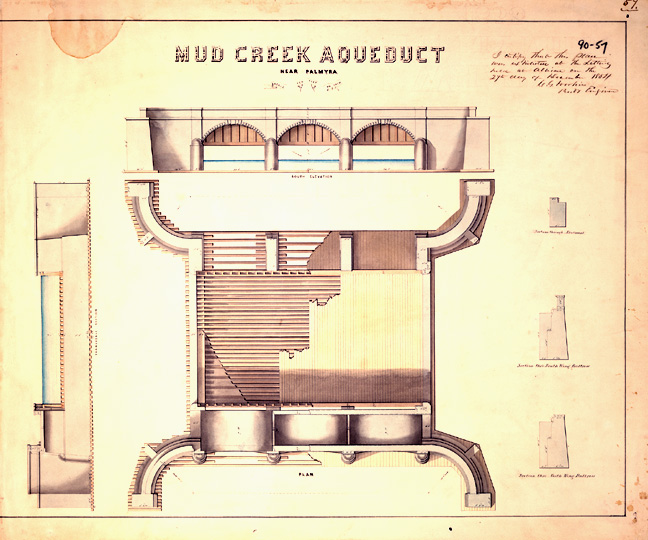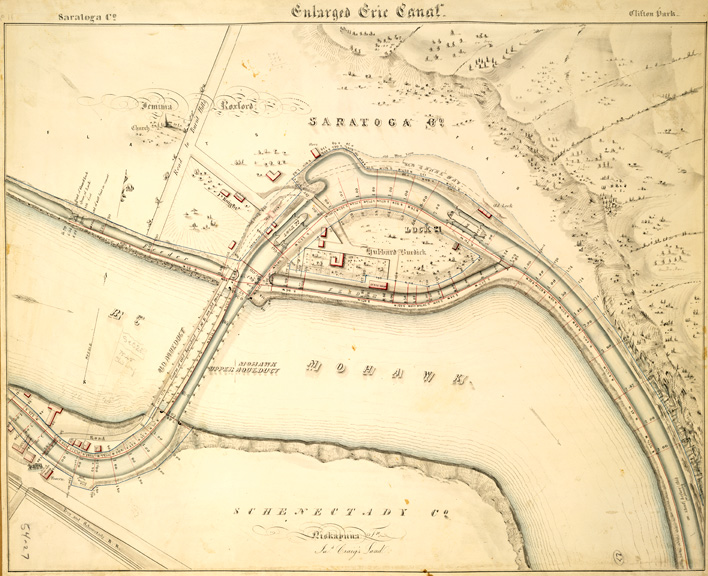Mud Creek Aqueduct Near Palmyra -- F. Osborne, c. 1854
ink and watercolor on paper, 21 1/4 x 25 1/4 in.
courtesy of New York State Archives BO292 90:57

The wooden trough that carries the Canal over the aqueduct must be very strongly
constructed and heavily braced in order to withstand the great weight of the water flowing
through it. In the case of the Rexford Aqueduct, pictured here, almost 400 tons of water must be
supported.
Additional information
Just a few miles west of the Cohoes Falls and lock system, the River makes a broad curve
from a north-south direction to east-west. To avoid major erosion of the bank holding the Canal
(on the east and south side of the River) which was exposed to the faster moving water on the
outside of the broad curve, two aqueducts had to be built. The first, east of the curve, carried the
Canal from the south side of the Mohawk to the north. The Canal ran westward along the north
shore of the River for several miles through southern Saratoga County and then, a second
aqueduct at Rexford was constructed to carry the Canal back to the south shore of the River. An
additional factor that justified the expense of two aqueducts was that if the Canal were along the
north side of the River, the snow on those south facing banks would melt sooner than if the
Canal
were in the shade on the south side. Thus, the Canal could open earlier in the spring.
This engraving depicts the aqueduct over the Genesee River in downtown Rochester. In the
foreground are the remains of the original aqueduct, which was replaced in the 1836
Enlargement.
The following are excerpts from the Diary of Jonathan Pearson
Tuesday August 6, 1833
"About one we entered [Rochester] which looked to me like a city filled with business and
wealth. The Canal runs along the east side of the river (Genesee) for half a mile before it
crosses, which is done by a splendid aqueduct of red stone having 11 arches. ... Its length is 800
feet."
Monday August 12, 1833
"I found myself in Rochester very early this morning where we remained the bigger part of the
day, which was rainy. I, however, notwithstanding the weather, made shift to visit some [of] the
mammoth flour mills which are now turning with all their machinery. These mills generally
have from six to nine runs of stones which are driven by two or three great wheels. Everything
about these flour mills, as it respects manufacturing the flour, is carried on by machinery; even
the wheat is taken out of the boats and carried to the place where it is cleaned and prepared for
grinding. The flour is carried by means of elevators from top to bottom until cool and then into
the bolts, which is the last process before barreling. All these various movements were formerly
performed by manual labour, but as time brings improvement in the various arts what was once
the labour of weeks in the hands of men is now done in days by the aid of mechanics."


